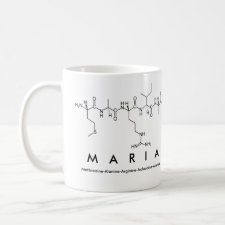
Authors: Bosserdt M, Gajovic-Eichelman N, Scheller FW
Article Title: Modulation of direct electron transfer of cytochrome c by use of a molecularly imprinted thin film.
Publication date: 2013
Journal: Analytical and Bioanalytical Chemistry
Volume: 405
Issue: (20)
Page numbers: 6437-6444.
DOI: 10.1007/s00216-013-7009-8
Abstract: We describe the preparation of a molecularly imprinted polymer film (MIP) on top of a self-assembled monolayer (SAM) of mercaptoundecanoic acid (MUA) on gold, where the template cytochrome c (cyt c) participates in direct electron transfer (DET) with the underlying electrode. To enable DET, a non-conductive polymer film is electrodeposited from an aqueous solution of scopoletin and cyt c on to the surface of a gold electrode previously modified with MUA. The electroactive surface concentration of cyt c was 0.5 pmol cm-2. In the absence of the MUA layer, no cyt c DET was observed and the pseudo-peroxidatic activity of the scopoletin-entrapped protein, assessed via oxidation of Ampliflu red in the presence of hydrogen peroxide, was only 30 % of that for the MIP on MUA. This result indicates that electrostatic adsorption of cyt c by the MUA-SAM substantially increases the surface concentration of cyt c during the electrodeposition step, and is a prerequisite for the productive orientation required for DET. After template removal by treatment with sulfuric acid, rebinding of cyt c to the MUA-MIP-modified electrode occurred with an affinity constant of 100,000 mol-1 L, a value three times higher than that determined by use of fluorescence titration for the interaction between scopoletin and cyt c in solution. The DET of cyt c in the presence of myoglobin, lysozyme, and bovine serum albumin (BSA) reveals that the MIP layer suppresses the effect of competing proteins
Template and target information: protein, cytochrome c, cyt c
Author keywords: Cytochrome C, Molecularly imprinted polymer film, Mercaptoundecanoic acid, Direct electron transfer, Scopoletin (7-hydroxy-6-methoxycoumarin)



Join the Society for Molecular Imprinting

New items RSS feed
Sign-up for e-mail updates:
Choose between receiving an occasional newsletter or more frequent e-mail alerts.
Click here to go to the sign-up page.
Is your name elemental or peptidic? Enter your name and find out by clicking either of the buttons below!
Other products you may like:
 MIPdatabase
MIPdatabase









